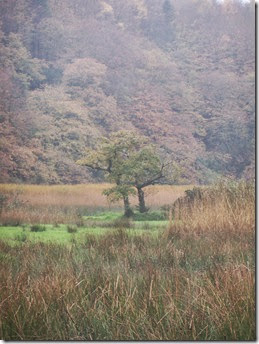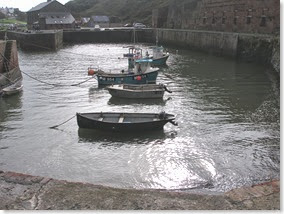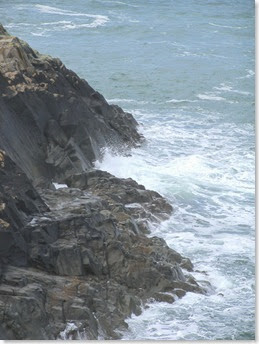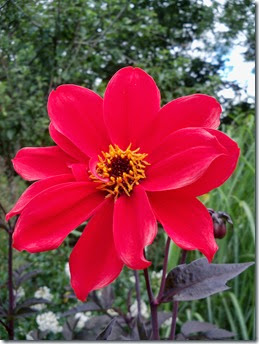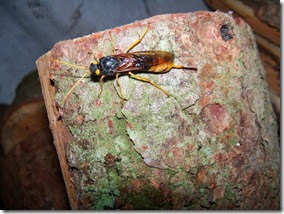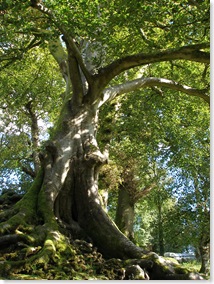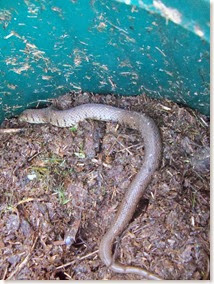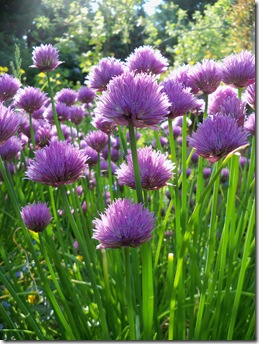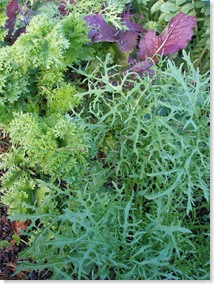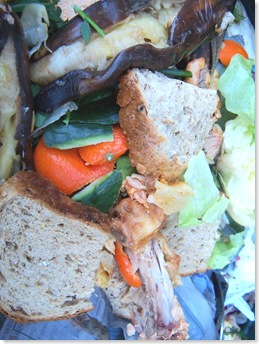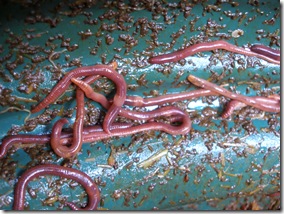I think it is time to delve into making Terra Preta in our garden. Last year prompted me into pushing forward with this. It was a year of nigh on continuous rainfall. Many of our vegetables suffered for it much of which was due to the washing out of some nutrients due to the high rainfall. Most noticeable was my garlic crop which suffered from Potassium loss, showing up as rust in the leaves.
I had been thinking of following Terra Preta growing for a while, if your not sure what Terra Preta is visit Wikipedia for a concise description.
Although our soil has masses of organic matter added to it each year, the bottom garden especially is a voracious light soil that suffered the most from the continuous rain last year.
My research has shown that Terra Preta soil making centred around the Amazon Basin, was developed by the indigenous people to overcome the poor thin soils of the Amazon that are subjected to very high rainfall.
Benefits of Terra Preta
If they could counter the effects of high rainfall leaching nutrients from the soil by creating Terra Preta soil, it sounded like a solution to my problem.
The method also seems to work at its best on acid soils, which ours is, although it is possible some benefits will occur on alkaline soils. The most obvious benefit for any soil is the Carbon storage that will occur. Basically adding the charcoal to any soil will mean locking up Co2 for possibly many thousands of years, hopefully.
So I had to find a source of charcoal to make a start. You need to start ahead of the time it is needed as the charcoal needs to be conditioned before it is added to the soil. That is if you want to plant up immediately. If the charcoal is not conditioned it can hold back growth on plants or seedlings. This is down to the charcoal needing bacterial and fungal cultures to move in to the spaces present in the charcoal itself.
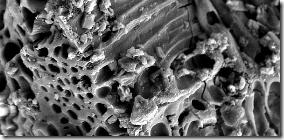 Magnified image of charcoal showing the spaces within.
Magnified image of charcoal showing the spaces within.
This is one of the secrets of adding charcoal to soil, the effects are being studied to see why it is so effective. So far though it is surmised that the bacteria present and the mycorrhizal fungi that take up residence in these microscopic holes enhance the bio activity and nutrient holding capacity of the soil.
Conditioning charcoal
The conditioning method can be done in two ways. Either soak the charcoal in an active solution such as compost tea to allow the bacteria to colonise as the charcoal takes up the moisture. A fairly quick method that can be effective in two weeks. But it means the charcoal will be fairly wet and messy to try and spread on the soil and even harder to add between already growing plants.
So I opted for the compost charcoal mixture. Adding either well rotted compost or worm compost to charcoal as a 50/50 mix. Then allowing to condition for a month before use. This I thought a better option as the charcoal itself added to worm compost that I have would make it into a nice spreading mixture.
No charcoal
This time of year though there is no charcoal to be had from anywhere. It's too early for barbeques and all the paraphernalia to be stocked by garden centres etc. If you are going to buy your charcoal in, try and get locally grown and processed charcoal rather than imported. Also make sure it is untreated charcoal as some contain combustion agents to making the lighting of it easier. These are pollutants that most probably damage plants and bacterial life.
So I had to make some of my own. We get quite a bit of very small wood chips from the duck bedding, which I normally rot down for mulching. But it is also ideal for making into charcoal. The small size also means it does not need further crushing before use as would be the case if lump charcoal is bought in.
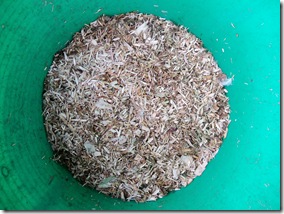 Duck bedding waste
Duck bedding waste
The bedding is not too wet after they have been cleaned out so it would not be too difficult to process with heat.
To experiment I have started small and in fact found it quite an effective method that produces reasonable quantities of charcoal without much effort. Although a wood stove is needed for the heat to make the charcoal. But if you have one and want to have a go here are my tips.
Method
Basically I fill an old tin, such as a cat food tin. They are made easier by the tops being able to be removed without a tin opener. Pack the wood chips, shavings or sawdust into the tin, even small twigs can be used. Then just place the lid back onto the contents. The lid sits perfectly and stops the contents igniting and burning down. A simple and effective way I have found.
The tin then needs to be placed within the stove for the heat to pyrolise the contents, producing charcoal. In the heat the tin gives off water vapour as steam, then gradually the steam stops and a flame appears on the top of the tin as flammable gases are driven off by the heat.
 Gasses are burnt off as a yellow flame on top of the tin.
Gasses are burnt off as a yellow flame on top of the tin.
After about an hour the process is finished. The tin should not be giving off any smoke or burning smell, it should just smell hot, just don't burn your nose if you do smell it! I can usually process three tins each time which produces a surprising amount of charcoal during an evenings fire burning.
Once cool enough the charcoal can be tipped out ready for mixing.
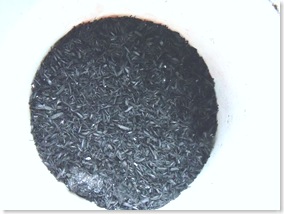 The charcoal bits.
The charcoal bits.
Next the charcoal gets mixed with worm compost.
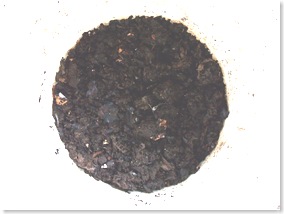 Worm compost.
Worm compost.
You need to hold your breath for the initial mixing or if you cannot wear a mask as quite a bit of dust flies up first thing, make sure your upwind as the dust is black.
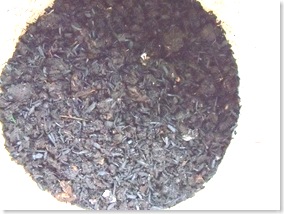 Worm casts and charcoal.
Worm casts and charcoal.
Once mixed its stored in an old compost sack for a month, ready for use in the garden.
I am already thinking out ways to increase my production of charcoal in the garden, but in the meantime this is an easy small production method anyone who has a wood stove can follow.

